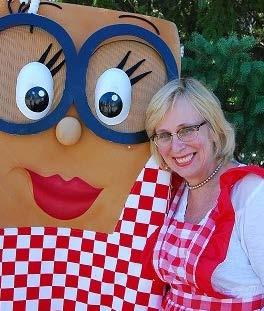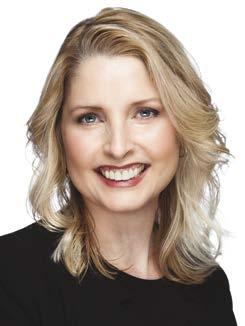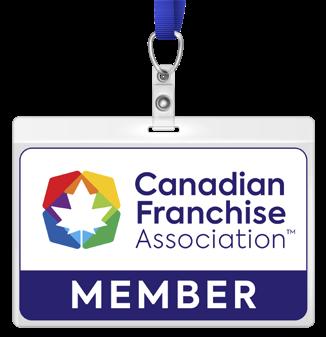
8 minute read
Marketability
Simplifying Digital Strategy for Your Franchise System BY LUKE AULIN
Getting consistent, measurable return on investment for your marketing dollars is hard enough for the one-off home services, restaurant or retail store, never mind your multi-location franchise business.
As a franchisor or franchisee in a new or established system, today’s digital marketing landscape can be difficult to navigate. This often results in traditional thinking, status quo operations, and seeing misplaced investments between marketing, sales, and customer success. Questions often asked by franchise owners include: • Is digital marketing a fit for my franchise? • Which digital channels should I pursue and with what content? • Who pays for what inside an effective digital strategy in my franchise system and who should perform what functions? The caveat being that every business is unique, including specific franchise agreements that often define the marketing spend between Head Office and Franchise Partner and, as such, a tailored strategy for yours is recommended above everything that follows here.
Why Digital? For the majority of businesses today, having a digital strategy isn’t optional. Consider: • 70 - 90 per cent of a buyer’s decision is made by the time they contact you or visit your website (Newman, 2014) • The average person spends four hours a day on their smartphones and nearly half of that on social media (Curtin, 2018)
If you are lost in the haze of questions, there is a way out! And in that sea of complexity, as always, it’s the simple solutions that often make the most sense.
With rationale for why digital is a must for your franchise along with some clarity around functional responsibilities, the aim of this article is to reveal a possible path to an effective digital marketing and sales strategy for your franchised business. To put the above stats into context, before the internet age, car buyers would visit an average of roughly six car lots before making what is one of their largest personal purchases. Today, they visit roughly 1.5 car lots before making that same decision. We live in the age of the educated consumer. Simply put, your online presence is essential to deliver on the journey your customers now expect when buying from you.
Here’s a funnel view of your customer’s journey to make the point:
This is not to say that the “sales” function doesn’t play a large role. Sales, particularly in franchise development (and most B2B scenarios), is still a huge part of the buyer’s journey. The last mile, so to speak, is sometimes the most important, depending on the complexity, depth, and longevity of the expected relationship.
But it is to say that marketing, more than ever - and even for established brands who have an easier time attracting franchisees - plays a larger role in finding and educating buyers of all kinds throughout the entire life of a business and throughout the journey their customers take.
A Framework for Digital Marketing and Sales Success Building the proper framework for a successful digital marketing and sales strategy requires addressing three basic questions: 1. Where does marketing end and sales begin? 2. What marketing activities should be executed? 3. Who in your organization, whether at head office, at the franchise level or outsourced agency, is best to deliver on marketing activities and be functionally accountable for satisfying the customer during their journey?
At a high level, marketing’s function serves all functions in the business. That said, a safe “cut off” for where marketing ends and sales begins in the customer’s journey is when a person has shown enough interest to buy, but requires deeper connection and understanding before making a final decision. In KPI terms, a Marketing Qualified Lead (MQL) is a person defined as ready to speak to someone in sales.
Marketing’s function is to deliver brand awareness, reach, eyeballs, clicks, traffic, etc. Ultimately, a marketing conversion is an MQL. The sales function is to take those leads and convert them into ideal fit, long-term customers.
To determine the mix of marketing activities, work back from your buyer personas’ demographic (age, gender, etc.) and psychographic (interests, passions, etc.) traits. Then work back from where they spend their media time. This helps answer “where are they?” and “what makes them tick?”
From there your customers are the heroes of the marketing stories you tell. Not you.
Marketing then becomes a game of content creation (what) and distribution (where). Content falls into two broad categories: “Branding”, which drives top of mind awareness and “Direct Response”, which drives actions such as page likes, phone calls, form submissions, etc.
For the most part, Head Office (HO) handles “branding” and Franchise Partners (FPs) are “direct response.” That being said, in digital, things get fuzzy as there are areas of perceived overlap. And where there are grey areas in accountability, it’s the job of leadership to clarify, as when two people are accountable for the same function, no one is.
The ultimate question here is: “who is responsible for funding which marketing initiatives?” Note: funding is different from “doing” - work can be outsourced or in-sourced. But the money flow is where decision-making starts.
Here’s a proposed way to look at this:

Social Media (HO) - Content that provides value to FPs (Facebook) and develops leads for future FP prospects (LinkedIn Ads), brand level customer stories (Facebook, LinkedIn, etc), and employees (Facebook, Instagram, etc.). Overall branded content is funded, created, and supplied by HO. Facebook pages can be set up at the local FP level, but we advise that HO own the admin rights and have a way to leverage Facebook’s “Locations” set up. This means that HO can distribute content from the HO Facebook page that is automatically distributed to the local FP Facebook pages. Search Engine Optimization (HO) - Keyword-rich branded content for the corporate website and the company blog as well as offpage backlinks from high domain authority sites to create authority in the market (and in the eyes of Google). Website (HO) - Ownership of the corporate website including location pages for the Franchise Partners. Invested in and maintained by HO with connectivity to top of funnel marketing that’s funded and driven by the FPs. Social Media (FPs) - Content inspired by day-to-day customer engagements - including FP’s customers generating their own organic content - to better resonate with potential customers in the local community. Localized content and local ad targeting should be leveraged by the FP to drive direct response marketing and local lead generation for the FPs. Search Engine Marketing & Landing Pages (FPs) - Google Ads, Retargeting Ads, and location-specific landing pages based on relevant keywords and geographic targeting funded by FPs, managed by HO or an outsourced agency, will help ensure marketing dollars are directed at the audience most likely to become customers for FPs.
Local SEO (FPs) - Localized SEO is ideally funded from the FPs opting in and then managed by HO or an outsourced agency to drive relevant website traffic from local communities on behalf of FPs for geographic specific searches.
It’s worth noting that free organic traffic is waiting for the FPs that have Google My Business information accurately locked-in.
Some Future Considerations Voice search will gain popularity as time goes on, making position “0” the desired location for your website’s organic search rankings. Technical SEO set up becomes more and more important as time goes on.
Private channels such as Facebook Messenger and WhatsApp are gaining popularity as ways to engage with businesses.
Recent rumblings around Facebook suggest that ads may find their way into these platforms soon. Early adopters stand to benefit as businesses learn to engage customers and craft ad messaging that fits the conversational flow of these channels.
In Summary Your franchise system can be successful online. Growth awaits your brand there.
Defining basic roles and responsibilities and clarifying the funding source for your digital marketing and sales functions will create harmony between HO and FPs and create alignment to effectively execute on specific marketing initiatives that will power your organization’s growth.
ABOUT THE AUTHOR Luke Aulin is the co-founder and CEO of RTOWN, a full-service digital agency focused on helping franchise & multi-location businesses grow. Luke is the recipient of BiV’s Top 40 Under 40 and has grown RTOWN to be named by BC Business as one of the largest digital agencies growing in BC. Luke delivered the keynote speech at CIMC, one of Canada’s largest marketing conferences. He is a people-first leader and deeply passionate about helping other entrepreneurs create growing companies that serve all stakeholders. Through serving franchises, he sees a way in partnership to make every town our town. Luke can be reached at luke@rtown.ca or 604-418-8146 and welcomes contact from any entrepreneur looking to grow their business.
Authorized Manufacturer
www.bdimaging.com
Be noticed, Be seen, Be printed.

Our expertise will help to make your vision into a reality.
BDI is the Official Sign Supplier for CFA Events
From Creative Concept Your vision and our expertise will make your concepts come to life.
Print That Works
As a 3M Platinum Partner, we only supply you with the highest quality.
We’re A Team
Where do you start? Whether you have an existing or brand new restaurant, retail store, tradeshow event, or office - we will transform your ideas into reality.
Custom wall and window graphics, LED menus, floor graphics and much more. You name it, we print it.
Get in touch Beyond Digital Imaging 70 Esna Park Dr. Unit #12-14, Markham, Ontario TF: 1.888.689.1888 Email: glenn.kerekes@bdimaging.com
A customized banking plan for your franchise business.
Talk to us today. cibc.com/franchising
CIBC logo design is a trademark of CIBC, used under license.










